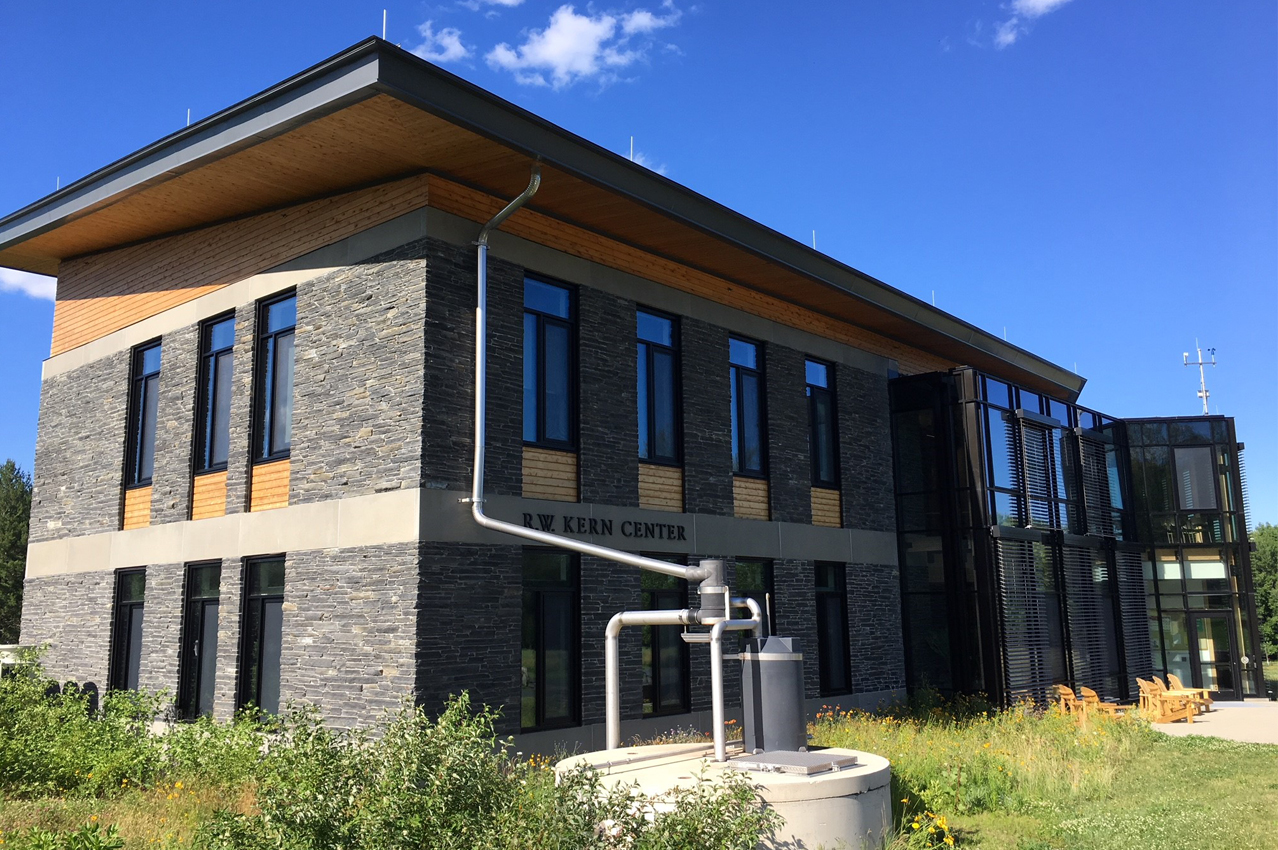2018's Living Future Higher Education Summit at Hampshire College was inspiring, educational and, for me, timely. I must admit, I’ve always viewed a certified Living Building as the sustainability equivalent of Wakanda – a self-contained, perfect place sealed off from the rest of the world, able to implement amazing things given resources (ahem, funding) that most projects don’t enjoy. While significant accomplishments, I thought of these buildings as academic exercises in the pursuit of perfection rather than something replicable or even relevant to most projects.
For those who don’t know, the International Living Future Institute (ILFI) developed the Living Building Challenge (LBC). LBC was an expansion of the BNIM’s work for the Packard Foundation that first defined the idea of a Living Building – a building that was regenerative as opposed to what was being promoted as “sustainable” through the LEED Rating System. This initial definition was expanded into the Living Building Challenge, a collection of 20 required imperatives organized into 7 “Petals” (Place, Water, Energy, Health + Happiness, Materials, Equity, Beauty) that has become a common standard for defining what “good” looks like in the built environment. While we have not yet achieved a Certified Living Building in our work, the framework has informed how we think about the positive impacts our projects can have. Discovery Elementary received Zero Energy Certification from the ILFI in 2017. ILFI has expanded the same philosophy to products (the Living Product Challenge) and communities (the Living Community Challenge) and has developed a series of transparency labels for products (Declare), building performance (Reveal) and organizations (JUST).
Of the 49 Living- and Petal-certified buildings, 65% are by higher education institutions; there’s something about the Living Building Challenge that appeals to this group. In her opening remarks, Amanda Sturgeon reminded Summit attendees that the Challenge is a philosophy, an advocacy and a certification program – in that order. As a philosophy, it defines what “good” is and helps owners, facility managers and design teams work toward that vision, using whatever strategies make the most sense for each project type, regulatory context and site.

What I had not fully appreciated until the conference was how much the Challenge functions as a tool for advocacy. These buildings aren’t just safe, healthy, net-zero water and energy structures; they work to change the regulatory structures so the rest of us can do it too. They create markets for new technologies, encourage manufacturers to disclose and optimize their products, and bring the discussion of equity back to the table.The lessons learned during design, construction and operations are shared with the public, and each owner, facility manager, donor and design team serves as a resource for others trying to affect the same kind of change. Nowhere was this more evident than at Hampshire College, which achieved Living Certification for the Kern Center in 2018. The project benefited from the groundbreaking Bechtel Environmental Classroom, Living Certified in 2012, at Smith College; the Class of 1966 Environmental Center at Williams College, Petal Certified in 2016; and the nearby Hitchcock Center for Environmental Education, developed concurrently with the Kern Center and Living Certified in 2018.
Smith was the first project to introduce the LBC and the concept of Net Zero Water to local and state regulators. Williams College continued the conversation a few years later and helped regulators to develop a process for permitting a rainwater harvesting system for potable use, which until then had not been attempted. Two years later, the Kern Center and neighboring Hitchcock Center for Environmental Education used the new permitting process to implement their systems, keeping the previous projects abreast of development and sharing lessons learned in implementation/operation. With each successive project, the regulatory hurdle lessened, the construction and design teams became more familiar with the approach, and the overall project costs went down. This collaborative spirit came through during the HE Summit education sessions, building tours and impromptu discussions, where all four institutions were represented by enthusiastic teams.

Through the Living Community Challenge, IFLI is also addressing the issue of scale – some strategies are more cost-effective, and have a larger impact, when implemented at a district scale. The Living Community Challenge uses the same seven Petals, and 20 similar imperatives, to encourage districts to develop a plan that moves them toward a Living or Petal-Certification through the renovation of existing buildings, Challenge-inspired new construction, infrastructure, transportation and landscapes. For institutes of higher education, the Living Community Challenge can serve as a uniting framework for what is often a host of separate institutional initiatives—sustainability, equity, landscape, infrastructure, carbon, purchasing – and can contribute positively towards reporting frameworks such as STARS and the Presidents Climate/Carbon Commitment. It is also remarkable for its long-term vision: since certification is based on measured performance, it can take a decade (or longer) between registration and certification to allow for development and implementation of the plan through renovations and new construction.
It was great to have a chance to climb around three Living Buildings with a group of fellow enthusiasts and hearing from the teams about how they struggled with meeting the Challenge imperatives. After seeing multiple water filtration systems, composting toilets, high performance envelopes, solar arrays, and native landscapes, it is amazing how it began to feel like the norm, rather than the exception, and that it was finally starting to move into the realm of the possible for everyone. I came away from the Summit with a better understanding of how various ILFI initiatives fit together to transform the way we build, and how VMDO can engage in the movement – particularly in our Higher Education work – using LBC as a platform for collaboration. While achieving Living Certified status may not currently be within reach for all projects, advocating for systemic industry change is.

